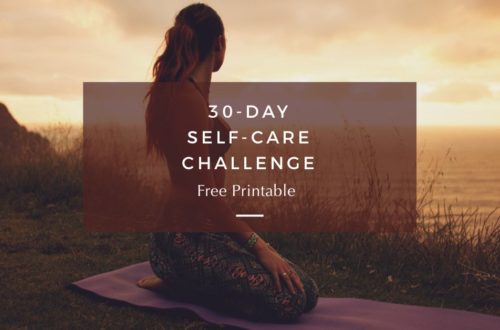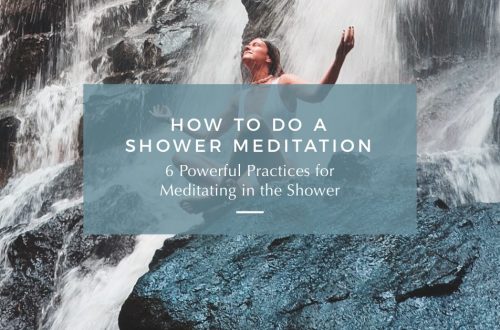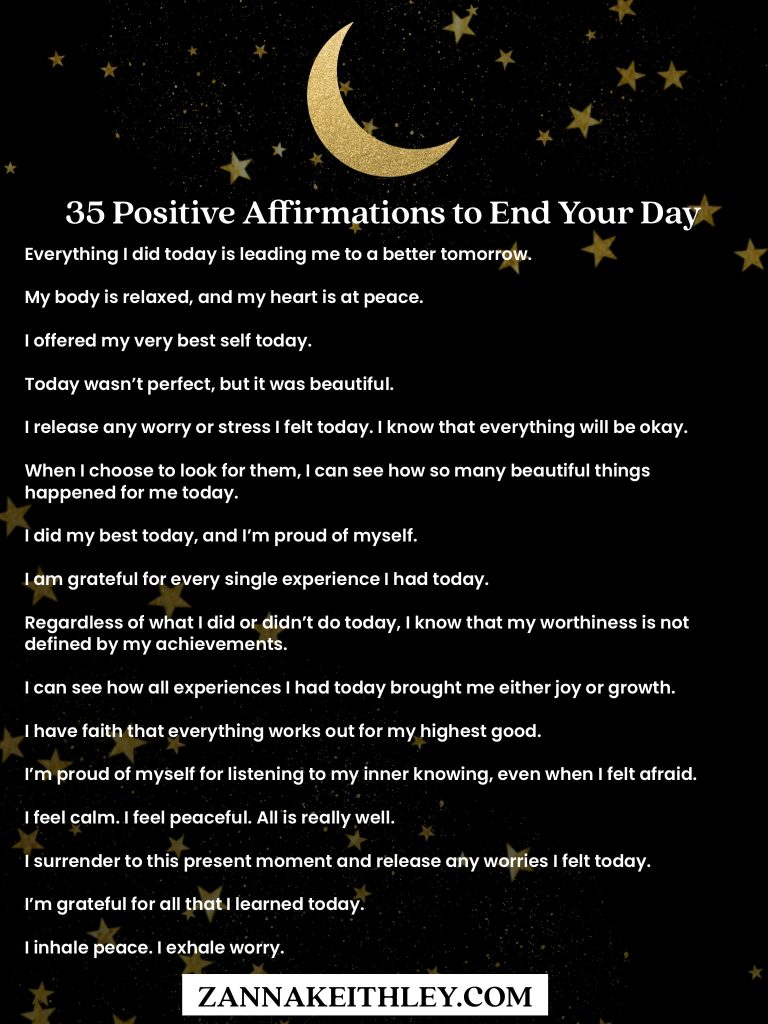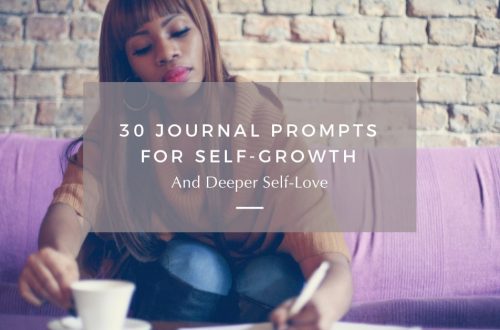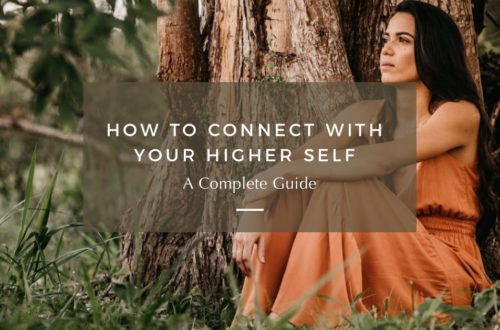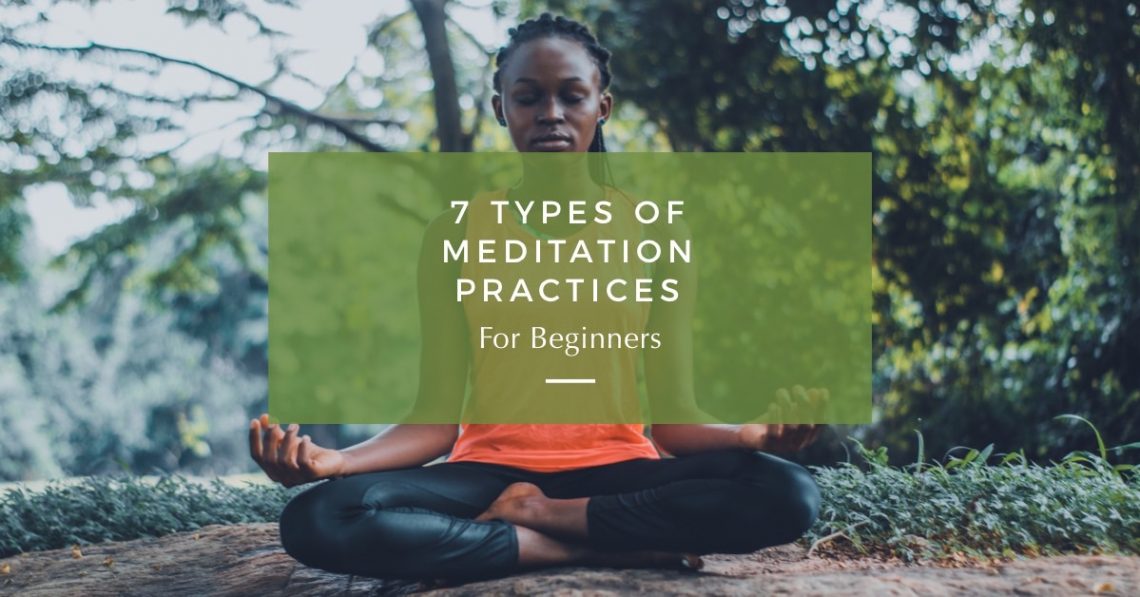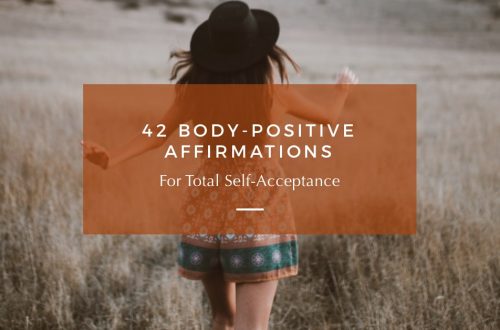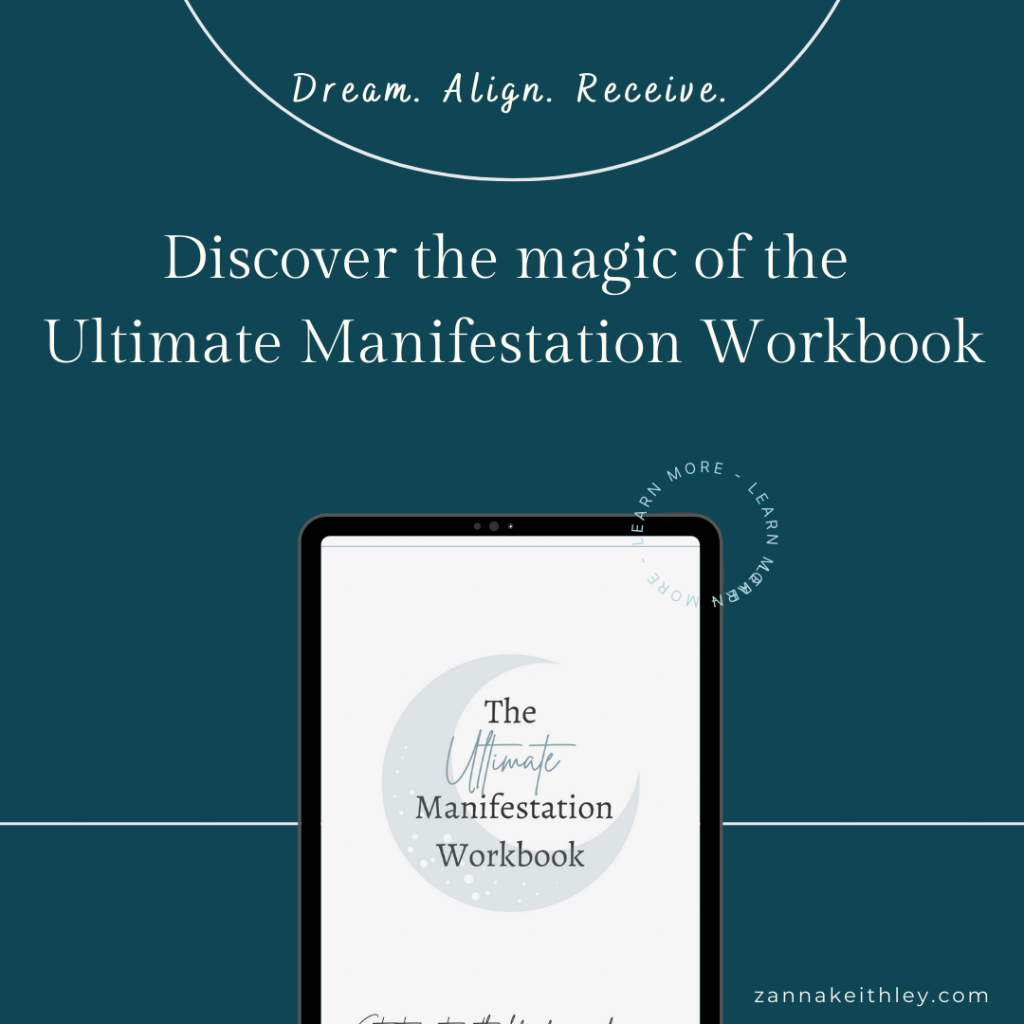-
65 Positive Affirmations for Anxiety
Below, discover 65 positive affirmations for anxiety, plus tips and tricks on how and when to use affirmations. And be sure to check out the links at the bottom of this page for more inspiring and uplifting affirmations.

65 Positive Affirmations for Anxiety Positive Affirmations
My first encounter with positive affirmations (that I remember) came in 2014. I’d found a list of 100 positive body affirmations somewhere online and copied and pasted the list into an email I sent to myself. I remember opening the email a few times after that and silently reading through the lines, but in the years that followed, I forgot about the list as it got pushed lower and lower in my inbox.
I’m pretty good about deleting emails and keeping my inbox neat and tidy, but somehow, that affirmations email survived all these years. However, it was only recently that I finally opened it up again and read through it for the first time in years.
And when I did, something struck me about the affirmations I was reading.
Over the past year, I’ve really cultivated a life where affirmations are part of my everyday self-care routine. I include affirmations in my journaling. I silently recite them to myself as I’m getting ready for the day or when I’m out driving. Sometimes, when my heart needs some soul-affirming words, I’ll meditate to guided affirmation meditations. And I also share my affirmations every morning in my Instagram stories, hoping that they might help at least one person the way they help me.
When I opened that email, I realized that the affirmations in that list weren’t really all that different from the ones I’ve been using over the past year.
I’ve had these positive words right at my fingertips all this time, but I never really knew how to use them.
How to Use Affirmations
This experience reminded me of an important lesson: affirmations are really powerful, but sometimes we need some gentle guidance before we know how to truly use them.
You see, I had these affirmations right in front of me for years, but whenever I looked at them, they were just words. I knew I liked and wanted to believe the words on the screen, but I didn’t know how to get the words to resonate.
So before I list these positive affirmations for anxiety, I want to take a minute to lay out a few key points for using affirmations so you can truly get the most possible good out of these words.
Tips & Tricks to Using Affirmations
- Stay in the Present Tense: Let’s use the affirmation, “I am worthy,” as an example. It isn’t, “I will be worthy when I land my dream job,” or “Once I lose twenty pounds, I’ll finally be worthy of unconditional love.” (I don’t even like writing those words.) The affirmation is, “I am worthy.” Right now. Just as I am. Own your worthiness in this present moment.
- Feel the Positive Emotions: Words are powerful, but often, the reason words are so powerful is because they trigger emotions in us. If I blandly and unemotionally recited affirmations without really feeling the power of the words, it wouldn’t get me very far. So when I say, “I am worthy,” I don’t start with the words that come out of my mouth; I start in my heart center. I let my worthiness permeate inside me. You see, these words aren’t just for your brain; these words are for your body and your spirit as well.
- Don’t Force It When It Doesn’t Feel Right: Maybe you see positive affirmations on your Instagram or Pinterest feeds, and you think, “Well, since everyone else can recite these affirmations with ease, I should be able to, too.” But I gently and lovingly plead, don’t do that. Don’t compare your journey to someone else’s. Don’t think that this should be easy. Like I said above, words are powerful, and that means saying them isn’t always easy. If you recite a positive affirmation, but in the back of your mind, you’re really saying, “Yeah right,” this is going to do more harm than good. This doesn’t mean you’re stuck where you’re at, though. I empower you to use modifications to any affirmation that doesn’t feel right. Here are some examples:
- Instead of “I am worthy,” you could say, “I am open to seeing my inherent worthiness.”
- Or, “I am willing to see all the ways in which I am worthy.”
- Also: “I am learning how to own my worthiness, even when it isn’t easy.”
- And this one: “I am becoming someone capable of seeing my own inherent worthiness.“
When to Use Positive Affirmations for Anxiety
I wanted to come up with a list of positive affirmations for anxiety because I’ve noticed that in my personal experience, these seem to be the moments I struggle with self-talk the most.
It’s become easy for me to own my worthiness and to assert that I am confident, strong, resilient, and all of those really good things when life is going well. And I’m super grateful for this, because it wasn’t always easy.
But in those harder moments when my heart feels hot and my chest feels tight and everything seems to be closing in on me?
In those moments, it’s not so easy.
Anxiety comes in all different shapes and forms. For me, my anxiety peaks when I feel like I have to do too much to do and not enough time. It also emerges when I’m entering into new and/or unfamiliar social situations.
The affirmations below are broken into five sections: Positive Affirmations for Anxiety – All Situations; Affirmations for Social Anxiety; Affirmations for Time Anxiety; Affirmations for Gym Anxiety; and Affirmations for Choosing Faith Over Fear.
I encourage you to use these affirmations during any time they might serve you. You could use them as preventative care to help you before you enter into a situation that may cause increased anxiety. You can also use them during any anxious situation.
65 Positive Affirmations for Anxiety
Positive Affirmations for Anxiety – All Situations
- I choose peace over worry.
- I choose authenticity over perfection.
- I inhale love. I exhale suffering.
- My heart is grateful. My mind is at peace.
- I am safe and supported, rooted in this present moment.
- All experiences shape me to be a stronger and braver version of myself.
- I have the courage to step forward, even when I’m afraid.
- I am equipped with all the tools I need to walk through this experience with dignity and grace.
- I rise above my insecurities.
- I am not my thoughts.
- I am not my fears.
- It is safe for me to be my authentic self.
- I show compassion for myself in all situations.
- It’s okay for me to feel anxious. I respond to my anxiety with love and compassion.
- I allow myself to live in the moment and release any worries about the past or future.
- I am strong, capable, and resilient.
- I am far stronger than I realize.
Affirmations for Social Anxiety
- I am always embraced and welcomed when I enter a room.
- I am free to be my true and authentic self at all times.
- I seek connection, not validation, from others. I am always worthy, and I validate myself.
- I am welcome here.
- I am loved for my authenticity, not for the illusion of perfection.
- When I’m feeling overwhelmed, I give myself permission to step away and take a deep breath.
- My presence is delightful to others.
- I bring light to those around me.
- I am worthy of beautiful friendships and lasting relationships.
- Whatever happens, this experience is an opportunity for joy, growth, or both.
- I’m not alone in how I’m feeling.
- It’s right for me to feel this way.
- Social situations aren’t always easy, and I give myself love and grace in this moment.
- I am so grateful for my courageous heart for stepping outside my comfort zone.
Affirmations for Time Anxiety
- There is no rush.
- I have time to complete everything I need to do today.
- When I’m feeling overwhelmed, I allow myself to pause, step back, and breathe.
- No matter what gets done today or what gets left undone, I am equally worthy, no matter what.
- And no matter what gets done and how much is left undone, I am enough.
- If I’m late, it really is okay. This is just one small moment in my life. It’s not forever.
- I will not rush through moments that matter to me.
- My worth is not defined by what I check off on my to-do list.
- Life is beautiful. I have time. All is well.
- There is beauty to be found in slowing down.
- I have time. I have time. I have time.
Do you want more positive affirmations? Check out 100 Amazingly Powerful Affirmations to Change Your Life from the incredible and inspiring Liz in Lotus. Liz provides 100 inspiring affirmations broken down into four sections: Money, Love, Self-Love, and Health. Don’t miss Liz’s post to feel uplifted and inspired today!
Affirmations for Gym Anxiety
- My presence is welcomed here.
- All of the people in this gym are kind, generous, and understanding.
- If I need help, there are kind people who will be happy to help me.
- I don’t have to go all out today. I just have to take the first step.
- I do not have to be perfect. I just have to show up.
- This is a really hard thing, and it’s okay to be afraid. I have the courage to push past my fear.
- I know that when I leave, I will be really glad that I came.
- I am proud of myself for having the courage to show up today.
- When I step outside my comfort zone, my confidence grows.
- When I step outside my comfort zone, my presence is welcomed by all.
- I am strong, confident, and capable of achieving more than I ever imagined.
- I have the courage to make positive choices for my mind, body and soul. I am prioritizing my total wellbeing. Because I love myself, I can do this.
Affirmations for Choosing Faith Over Fear
- I trust and listen to my intuition, even when I’m afraid.
- I choose courage over fear and peace over perfection.
- I release doubt and welcome faith.
- I trust and believe that everything is always working out for my highest good.
- I cultivate deep courage and compassion within my mind, body, and spirit.
- Everything is unfolding in perfect timing. I release worry and choose to trust.
- I bravely let go and allow the universe to reveal its beautiful plan for me.
- I trust that the universe gives me exactly what I need at exactly the right time.
- My energy is not reserved for worrying. I use my energy to trust, believe, and have faith.
- I am exactly where I’m meant to be.
- All is really well.
Do you use affirmations to help you in anxious moments? And have you found any other self-care practices to help you when anxiety starts to creep in? Share your affirmations and practices in the comments below!
Discover More Positive Affirmations
- 100 Positive Affirmations for Women
- 40 Gentle Affirmations for Healing
- 35 Positive Affirmations to End Your Day
- 100 Wholehearted Promises to Make to Yourself Today

65 Positive Affirmations for Anxiety 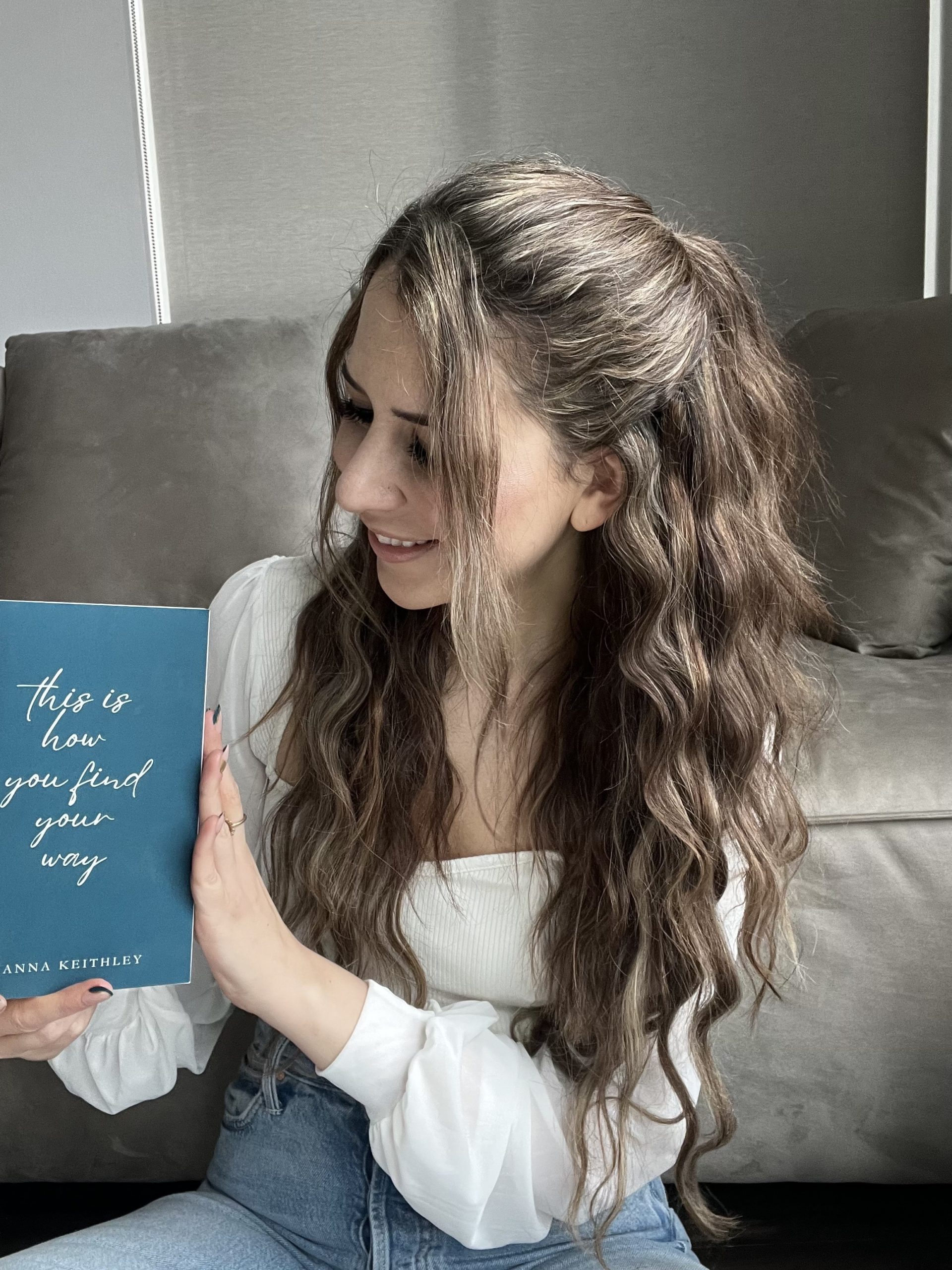
Zanna Keithley is an author, poet, and social media content creator who writes short prose dedicated to inspiring readers to follow their dreams, trust their intuition, and create beautiful and fulfilling lives. You can find her original writing on Instagram @zannakeithley.
-
40 Positive Affirmations for Healing
While uplifting, inspiring, and joyful affirmations are essential for a complete self-love routine, sometimes, we need something a little softer. In this post, I share 40 positive affirmations for healing to bring you comfort and relief, no matter where you are in your healing journey.

40 Gentle Affirmations for Healing Updated December 3rd, 2021
About Positive Affirmations for Healing
What do you think of when you hear the term positive affirmations?
For me, this has always carried a connotation of joy, confidence, and optimism. I’ve often used affirmations to assert my worthiness, raise my confidence, and instill a strong and unwavering sense of self-belief.
But the truth is, affirmations aren’t always full of perk, pep, and cheer.
Sometimes, affirmations are soft and unassuming. Sometimes, they feel like a deep, cleansing breath. A cool drink of water. A quiet, unassuming hand on your shoulder offering support and asking for nothing in return.
Sometimes, affirmations feel like forgiveness.
Sometimes, they feel like that last thread of hope that you cling onto with a strength and ferocity you didn’t even know you had.
And sometimes, they feel like comfort. Like a warm blanket gently settling over your body, mind, and soul.
Chances are, if you’re reading this right now, you’ve experienced deep pain at some point if your life. Maybe that pain is still part of your current experience. Maybe you’ve healed, but every once in a while, it arises again in the most unexpected moments, leaving you to pick up the pieces all over again. It’s likely that the pain you’ve experienced has changed you in some way. You may even still be trying to come to terms with those changes: releasing the person you once were and rediscovering the person you are now.
Above all else, have compassion for your pain.
There is no timeline dictating when you should be fully healed. You don’t have to just “get over it.” You don’t need to force yourself to feel better.
And if you were doing better, and one day the pain arises again, making you feel like you’re right back in that dark place you were in months or years or even decades ago, that’s okay. Pain is not linear. You are allowed to heal from the same pain over and over again, even if it’s years later.
This isn’t backtracking.
This is part of your journey forward.
Below are 40 positive affirmations for healing. Know that these affirmations do not need to be recited with perk and pep. These affirmations can be soft. Quiet. Unassuming. Once you read them, they belong to you. Not me. Not anyone else. So make them yours, and find somewhere you feel safe, secure, and comfortable to recite the ones that resonate most with you.
Let them be a warm blanket, covering your body and healing your soul
Positive Affirmations for Healing
- I honor my past experiences, but I do not allow them to take away from my current joy.
- I am safe and supported, rooted in this present moment.
- I allow myself to move slowly through this healing journey and take my time.
- I lean into my emotions, no matter how uncomfortable they feel.
- Emotional releases are good for me.
- I will be gentle with myself today.
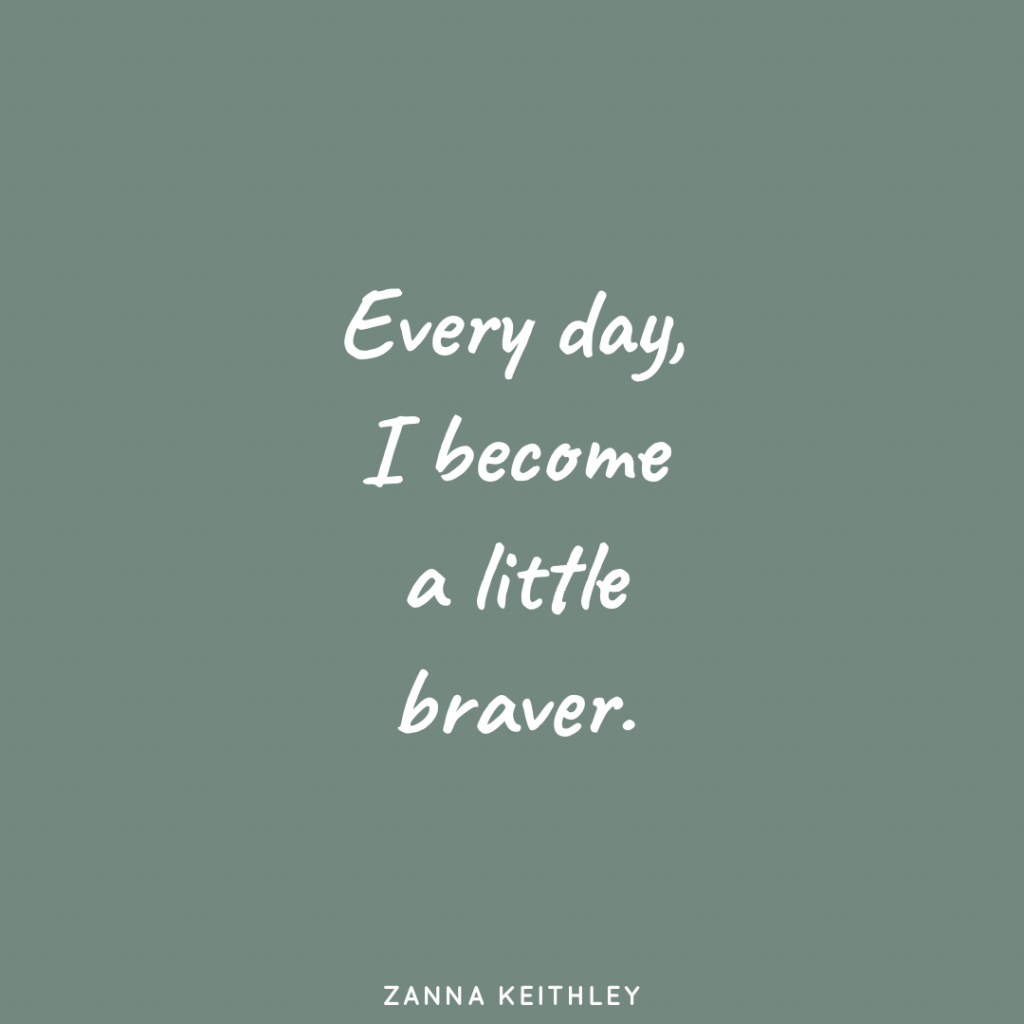
- Every day, I become a little braver.
- Every day, I love myself a little more.
- I am healing more and more every day.
- I allow myself to take time for me.
- When I’m feeling overwhelmed, I allow myself space to pause and breathe.
- I am safe to open my heart to new people, opportunities, and experiences.
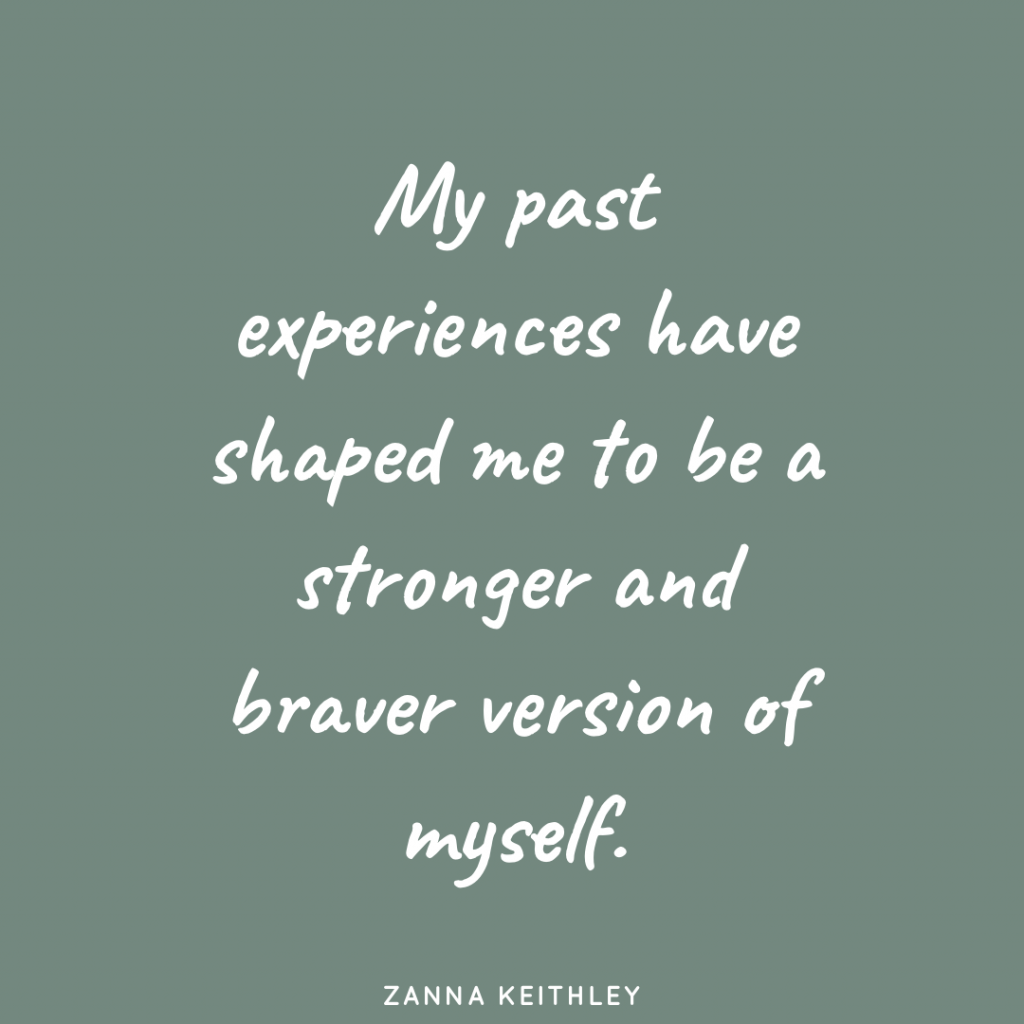
- My past experiences have shaped me to be a stronger and braver version of myself.
- I forgive those who have harmed me in the past and peacefully detach from them.
- The world needs more of me, not less.
- I show compassion for myself always.
- I have the power to change my story.
- I am far stronger than I realize.
- I love myself fully, even the parts I once judged and neglected, because all of me is worthy of love.
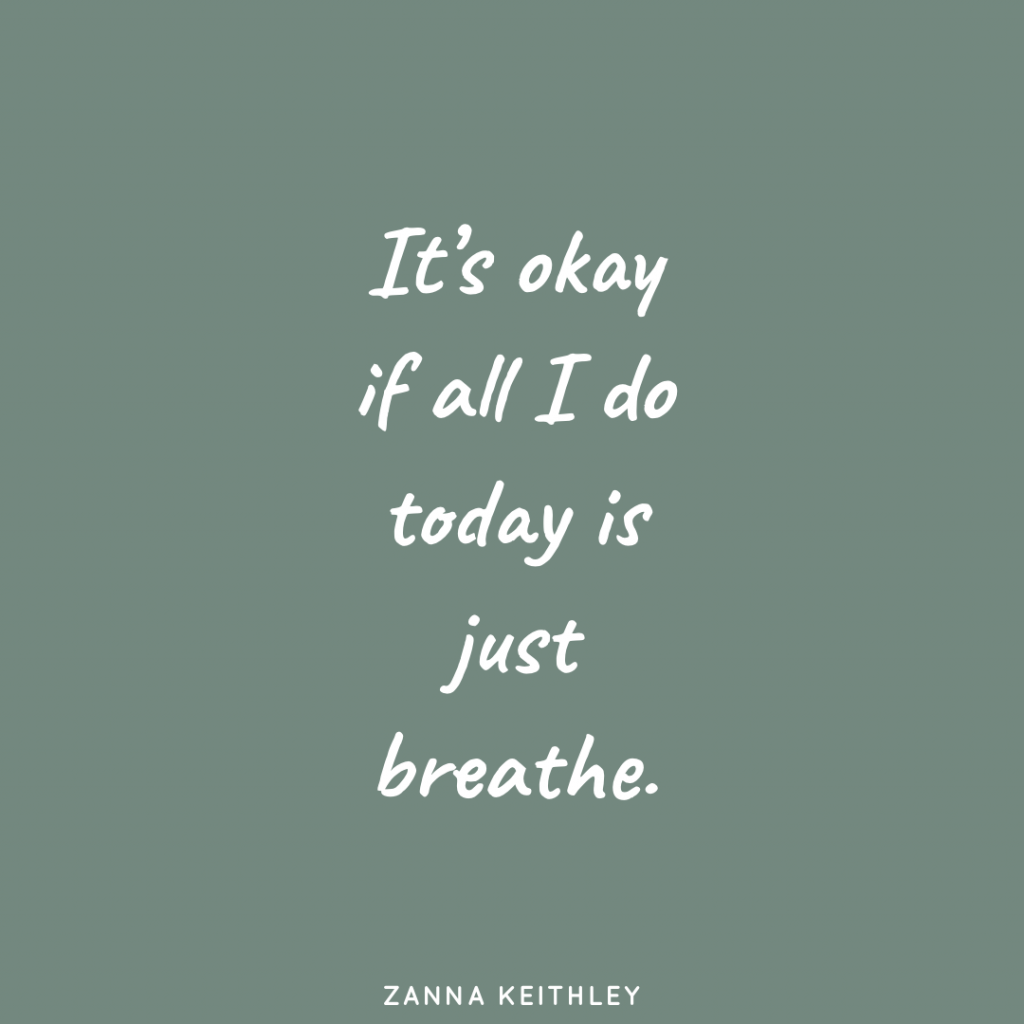
- It’s okay if all I do today is just breathe.
- I know that healing is not linear, and I accept my good days and my bad days, knowing I will be okay.
- I make space for all my feelings, but I have the power to rise above anything that doesn’t serve my highest good.
- I am allowed to heal from the same pain over and over again.
- I know that when I heal myself, I help to heal the world.
- Even when the world around me is cloaked in darkness, I can always find the light.
- I love and honor both my darkness and my light.
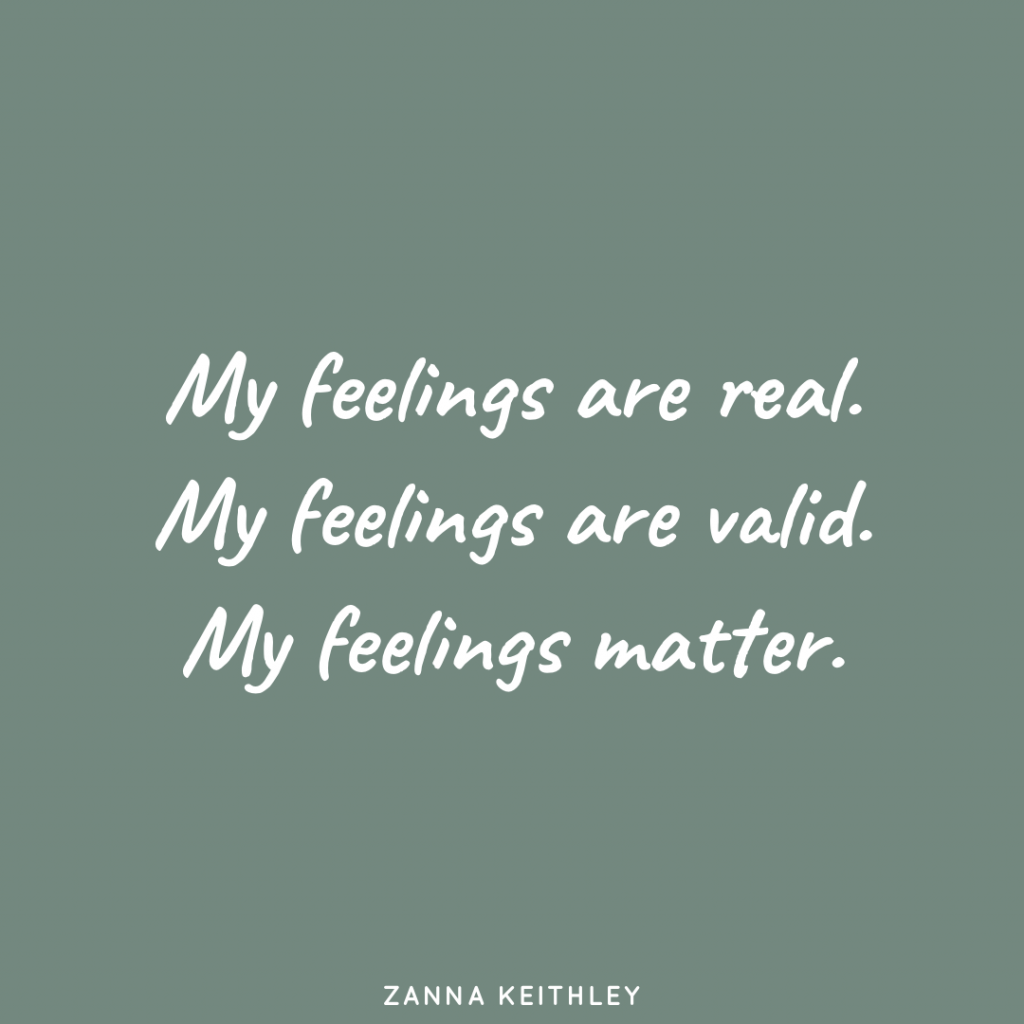
- My feelings are real. My feelings are valid. My feelings matter.
- I am allowed to put myself first and prioritize my needs.
- I am allowed to say no to anything that doesn’t support my highest good.
- I release the compulsion to bury my emotions with busyness.
- I am a real, breathing human being. Not a statistic.
- I forgive myself.
- I am allowed forgiveness.
- I am sometimes scared, but I move forward anyway.

- I am worthy of a beautiful, joyful, wholehearted life.
- I trust that everything is working out for my highest good.
- I release the need to control my life and surrender to this present moment.
- When I’m caught in life’s rainstorms, I do not shrink or wither; I bloom.
- Healing is personal and sacred. My healing journey is my own.
- I allow myself to take one small step at a time.
For more beautiful inspiration, check out these uplifting blog posts from the incredible Liz from Liz in Lotus!
- Happiness Can’t Be Found Somewhere Over the Rainbow
- 100 Amazingly Powerful Affirmations to Change Your Life
More Posts You Might Like
- 35 Positive Affirmations to End Your Day
- 100 Wholehearted Promises to Make to Yourself Today
- 4 Undeniable Reasons Why You Are Not Broken
- 35 Epic Morning Affirmations to Create a Beautiful Day
For more affirmations, be sure to check out my free ebook, 400 Powerful Affirmations Designed to Uplift, Inspire, and Empower Your Highest Self.

40 Gentle Affirmations for Healing 
Zanna Keithley is an author, poet, and social media content creator who writes short prose dedicated to inspiring readers to follow their dreams, trust their intuition, and create beautiful and fulfilling lives. You can find her original writing on Instagram @zannakeithley.
-
35 Positive Night Affirmations to End Your Day
Looking for some positive night affirmations to recite as you end your day? Morning affirmations get all the spotlight, but night affirmations are just as important for your self-care routine! Below, I give you 35 of my favorite night affirmations to help you end your day on a positive note. Plus download your free printable affirmations below!

Pin this for later! 35 Positive Affirmations to End Your Day Updated September 2nd, 2021
Why Use Night Affirmations?
I am 100% guilty of focusing on positive affirmations in the morning and even the afternoon while completely abandoning them at night.
It’s an easy trap to fall into.
For me, I have a morning routine that includes journaling for 30 minutes right when I wake up. And almost always, these journal entries include some high-vibe, uplifting affirmations to help me start the day feeling positive and inspired. My workouts are also done early in the day, which is another time I repeat positive affirmations to myself. And I’m pretty decent at remembering to silently recite affirmations when I’m out and about, or when I get a few seconds to pause during work.
But when it comes to the evening, I’m not the best at reaffirming my worthiness. Or simply reminding myself that everything I did today was enough. And the things I didn’t do? Those things are okay, too.
Because my worthiness is not defined by my achievements.
Recently, I set the intention to be more mindful with repeating nighttime affirmations. When I say this, know that this isn’t for the sake of just mechanically repeating positive words like a robot. The purpose of these affirmations is to be more mindful with my thoughts and the way I speak to myself, while owning my story and telling my own truths (especially when my pesky brain starts to return to bully mode).
Looking for more affirmations? Check out these posts!
- 43 Creativity Affirmations to Inspire Your Limitless Imagination
- 42 Body Positive Affirmations for Total Self-Acceptance
- 50 Positive Affirmations for Entrepreneurs
- 75 Self-Love Affirmations to Celebrate Your Worthiness
- 50 Money Affirmations to Manifest Limitless Abundance
- 50 Positive Affirmations to Remain Calm and Confident During Your Workday
What Are Positive Affirmations?
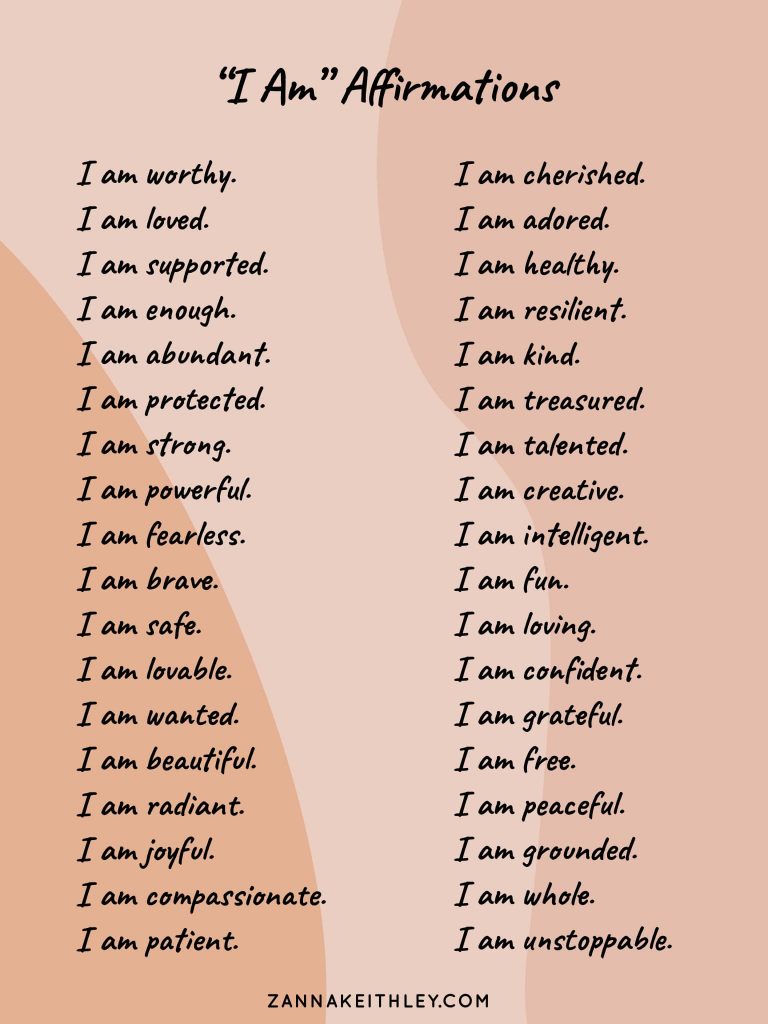
“I Am” Affirmations Positive affirmations are statements (usually made in the present-tense) designed to uplift and encourage while boosting self-belief and supporting your overall wellbeing.
The classic first two words of an uplifting affirmation are, “I am . . .”
However, an affirmation can start with any phrase that fits the context of what you want to affirm.
Here are a couple other common ways you might start an affirmation:
- I can . . .
- I accept . . .
- My (life, heart, body, worthiness) . . .
- I release . . .
- I have . . .
- All is . . .
- Everything is . . .
- I feel . . .
For further insight into affirmations, how to use them, and why they work, check out my post How to Use Affirmations (So They Actually Work).
Positive Affirmations to End Your Day
Below are 35 positive night affirmations to help you ease into the comfort and quiet of nighttime as you settle down for the day. These night affirmations range in their desired effect; some are gentle and calm while others are uplifting and empowering. Feel free to save and share any that resonate with you!
Night Affirmations
- Everything I did today is leading me to a better tomorrow.
- My body is relaxed, and my heart is at peace.
- I offered my very best self today.
- Today wasn’t perfect, but it was beautiful.
- I release any worry or stress I felt today. I know that everything will be okay.
- When I choose to look for them, I can see how so many beautiful things happened for me today.
- I did my best today, and I’m proud of myself.
- I am grateful for every single experience I had today.
- Regardless of what I did or didn’t do today, I know that my worthiness is not defined by my achievements.
- I can see how all experiences I had today brought me either joy or growth.
- I have faith that everything works out for my highest good.
- I’m proud of myself for listening to my inner knowing, even when I felt afraid.
- I feel calm. I feel peaceful. All is really well.
- I surrender to this present moment and release any worries I felt today.
- I’m grateful for all that I learned today.
- I inhale peace. I exhale worry.
- There are so many reasons to be grateful for this day. I choose to focus on my appreciation.
- I feel calm, relaxed, and at peace.
- Instead of wishing I could change the past, I focus on this present moment.
- I release worry and choose to trust.
- A lot happened today, but I choose to live fully in this moment right now.
- I know that good things are always happening for me.
- I have the power to control my thoughts.
- No matter what was left undone today, I know that I am always enough.
- I am enough. I have always been enough. And I will always be enough.
- I am exactly where I’m meant to be.
- Even when things didn’t happen how I wanted, I know I’m on the right path.
- I feel relaxed. I feel whole. This is exactly where I’m meant to be.
- I am grateful for the hardships I experienced today because they allowed me to grow.
- I love myself fully now, just as I am, as I continue to grow.
- Everything is unfolding for me in perfect timing. I release worry and choose to trust.
- I know that tomorrow’s going to be another really beautiful day.
- Everything that happened today is bringing me closer to my dreams.
- My life is really beautiful. I wouldn’t change it for anything.
- I am grateful for every step of this journey and every second of my imperfect, messy, beautiful life.
Bonus – Meditations to End Your Day
As a bonus, here are some of my favorite meditations on the Insight Timer app for ending the day feeling calm, content, and peaceful.
- Liza Colpa’s Manifestation for a Good Night’s Rest and A Meditation for Manifesting a Reset After a Long Day
- Carrie Suwal’s Wash Away Heaviness and Find Peace
- Bethany Auriel-Hagan’s Breathing Into Sleep
What positive affirmations do you use to end your day? And have you found any tips or tricks to help remind you to keep affirming those uplifting words even as the day comes to a close? Feel free to drop a note in the comments below!
And for a daily dose of positive affirmations, be sure to follow me on Pinterest and Instagram!
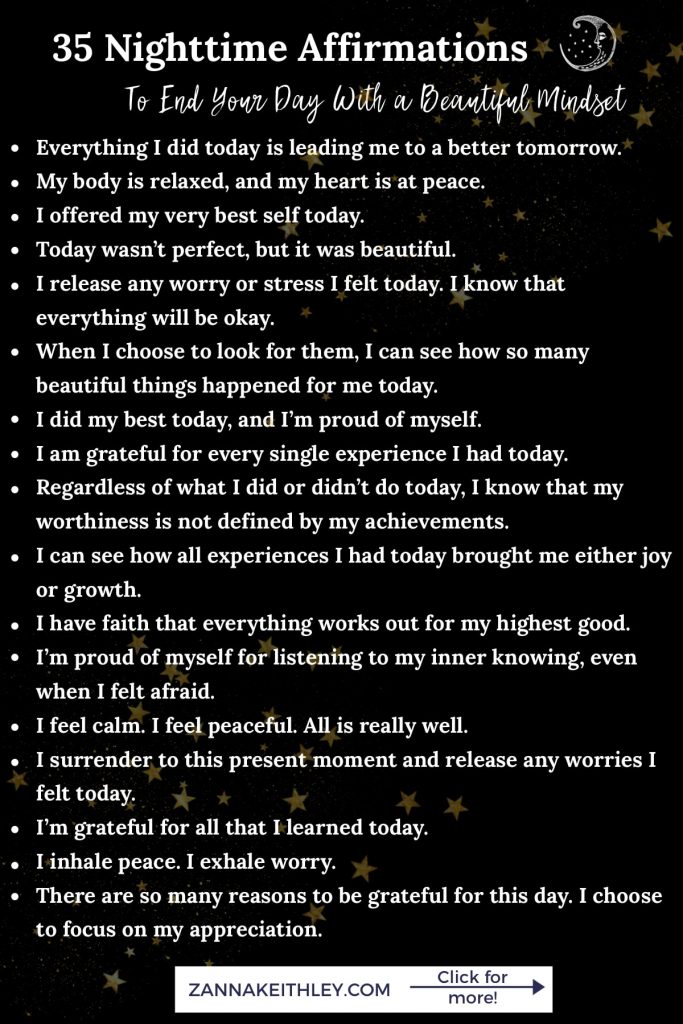
Pin this for later! 35 Positive Affirmations to End Your Day 
Zanna Keithley is an author, poet, and social media content creator who writes short prose dedicated to inspiring readers to follow their dreams, trust their intuition, and create beautiful and fulfilling lives. You can find her original writing on Instagram @zannakeithley.
-
Meditation Practices For Beginners
Below, you’ll find seven types of meditation practices for beginners, including mindfulness, body scan, visualization, and chakra meditations. I also provide you with links to guided meditations you can try at your home today.

Pin this for later! 7 Types of Meditation Practices for Beginners Meditation
If you’ve never meditated before, the thought of starting a meditation practice can feel kind of daunting. How do you start? When’s the best time to meditate? How are you supposed to sit, and what the heck do you do with your hands?
Here’s my answer to just about every question when it comes to starting a meditation practice: start where you are with what you have.
There will never be a perfect time to start meditating, and yet, it is always the perfect time to start meditating. You don’t need any special equipment. You don’t need to wait for a certain time of day. And you definitely don’t need to cultivate the special superpower of being able to clear your brain of thoughts. At most, you just need yourself and a few minutes of quiet.
Below, I’ve listed seven of the best types of meditation practices for beginners. While you can definitely choose any of these in any order, I’d recommend starting with mindfulness meditation, as that lays the foundation for just about every other type of meditation.
At the end of each section, I link to associated meditations on the Insight Timer app. I have absolute no affiliation with the Insight Timer app; it’s just my personal favorite for meditation. While I’ve linked to the meditations on Insight Timer’s webpage, I definitely recommend downloading the app on your phone for easier access.
Of course, if you find a different app that you want to use, go for it. You can even try multiple apps and see which one you like best. While you don’t need an app to meditate, it’s definitely helpful when first starting out.
Meditation FAQs
Before I get into the different types of meditation practices for beginners, here are some answers to a few more common questions that you may have.
What time of day should I meditate?
When I first started, I thought I needed to meditate as soon as I woke up because that’s what I had read in articles and blog posts. Meditating first thing in the morning is a great practice. But so is meditating an hour after you wake up. Or two hours later, or at lunch time, or before dinner, or after dinner, or before bedtime. Basically, anytime you want.
There is no right or wrong time to meditate. Do it when you have time and when it feels right for you.
How should I sit when I meditate? And what do I do with my hands?
In many of the guided meditations, the teacher will give you some instructions on how to sit, usually giving you a couple options depending on what’s most comfortable for you. If you’re on the floor, you can sit cross-legged with your hands on your knees and your palms facing up or down. If you’re on a chair, you can sit with your back straight, hands on knees, legs uncrossed.
And it may seem weird, but you can even lay down as well. It took me a while to try a meditation laying down, but it truly gave me a different and enriching experience.
Now, I’ll choose different positions depending on how I feel and what kind of meditation I’m doing.
What if I can’t clear my mind of thoughts?
This is one of the biggest misconceptions of meditation and why many people believe meditation isn’t for them. If you listen to just about any meditation teacher, they’ll tell you the same thing: meditation is not about clearing your mind of thoughts. If it was, I’m not sure any of us, not even the most advanced meditators, would ever succeed. The last thing we want to do is suppress or evade our own thoughts.
At its heart, meditation (especially practices rooted in mindfulness) is about non-judgmental observation, conscious awareness, and gently rooting ourselves in the present moment. When you’re meditating and your mind strays, don’t berate or speak down to yourself. You are not “wrong” for having a thought.
When I first started, I’d use the phrase, “Ah, I’m having a thought.” I imagined I was observing something curious and interesting but that I didn’t need to hold onto. Once I recognized the thought, I’d release it and come back to focusing on my breath.
Allow yourself to become an objective observer of your own mind and accept any thoughts you have. Then, gently guide your brain back to the present moment.
7 Meditation Practices For Beginners
Mindfulness Meditation
What exactly is mindfulness meditation? First, let’s look at the word mindfulness. Have you ever gotten so lost in thought that you’ve forgotten where you are or what you’re doing? Do you find yourself thinking about an event from the recent past and going over all the details? Do you replay old scenes over and over again, getting pulled into those past emotions? Or what about making up scenarios and obsessively playing out scenes of the future that haven’t even happened?
Can you imagine living a life where you’re always living in the past or future—never in the present moment?
This is where mindfulness comes in.
Mindfulness is conscious awareness of the present moment through an unattached, objective, and unemotional lens. Mindfulness allows you to notice when your thoughts have strayed and gently return them to this present moment. The key here is that you don’t judge yourself for your straying thoughts. You can simply notice that you’re having a thought and then release it without judgment.
A common analogy is to think of it as clouds passing over you in the sky. Imagine you’re lying on the ground looking up at a perfectly blue sky, and a cloud passes over you. “Look, there’s a cloud,” you think. Then it floats out of your vision, and you let it go without attachment.
That’s kind of how it works with your thoughts. In mindfulness meditation, you’re not trying to rid your head of thoughts; you simply notice with objective awareness when you’re having a thought, and then you let it pass over you and return to this present moment.
So how exactly do you stay grounded in this present moment?
Most often, it’s through your breath. In many mindfulness practices, you simply keep your focus on your breath coming in and going out of your body. And when you find your thoughts going astray, you return your focus to your breath.
In the beginning, it might help you to use numbers or a counting system. For example, for every inhale, you may think a silent one, and for every exhale, you think two.
Or you can count to ten: every inhale is an odd number and every exhale is an even number. When you get to ten, you return back to one and start all over again.
Insight Timer Guided Meditation Practices for Beginners:
Kate James’ Mindful Awareness Meditation (just under 10 minutes) gently guides you through the act of bringing mindful awareness to your present experience. This is a really wonderful meditation for guiding you through the process of becoming an objective observer of yourself.
Laurie J. Cameron’s Mindful Breathing With Compassion is a beautiful 10-minute practice that combines mindful breathing with a loving-kindness practice.
Body Scan Meditation
Body scan meditation is an extension of mindfulness in that it allows you to consciously notice how different parts of your body are feeling in the present moment without judgment.
In a body scan meditation, you start at your feet and make your way up, paying attention to the way each body part feels. (If you prefer, you can start at your head and move downward.)
Are you carrying tension in this particular body part? Are there any feelings or sensations? Don’t attach any value to your answers. For instance, if you’re feeling tension in your shoulders, don’t label this as bad. Just notice.
Now, there are differing beliefs on what a person should do next.
For some, the act of simply noticing is the goal of this meditation. The reason is that this grounds you in the present moment and cultivates a sense of mindfulness.
Others go one step further by consciously releasing the tension they perceive. One way to do this is by breathing into the tension. As you exhale, visualize the tension leaving your body and evaporating into the air. Another technique is to tense up your muscles and then relax them. You might also visualize a wave of relaxation flowing through your body.
While a body scan meditation can be done anytime, it’s especially beneficial in helping you to relax at nighttime. If you find yourself lying in bed at night unable to fall asleep, don’t try to suppress your thoughts. Instead, you can do a body scan meditation right there in your bed. Simply relax your muscles and release the tension from each part of your body.
Insight Timer Guided Meditation Practices for Beginners:
Wendy Chan’s Mindful Body Scan (just under 11 minutes) is a simple but powerful meditation that gently guides you through noticing the different sensations in your body without any judgment or labeling the sensations as good or bad.
Tara Brach is one of the most well-known meditation teachers both on and off the Insight Timer app. Her Basic Body Scan & Breath Awareness (11 minutes) is a perfect meditation for beginners.
Loving Kindness Meditation
The goal of a loving kindness meditation is to extend kindness toward yourself and others in your life. In the first loving kindness guided meditation I ever tried, I was instructed to visualize I was standing in front of myself. I looked myself in the eyes, and I repeated these words:
May you be well . . . may you be happy . . . may you live with ease . . . may you know you’re always loved.
Then, I was instructed to picture someone I loved and cherished deeply standing in front of me and to recite those same words.
Next, I visualized someone who I sort of, kind of knew but who I didn’t have any positive or negative feelings toward, such as a grocery store cashier or a neighbor down the street. Again, I envisioned looking them in the eyes and repeating those words. T
hen, I was guided to envision someone I felt negative feelings toward, to look this person in the eyes, and to recite these same kind and loving words as well.
And finally, I extended these words to the entire universe in which I am connected.
There are many variations of a loving kindness meditation, but at their core, they all promote deep feelings of love and compassion.
One great thing about this practice is that you don’t have to be sitting alone in a dark room to practice loving kindness. If you’re a beginner, it helps to do a few guided loving kindness meditations to understand the process and follow some of the different variations of this meditation. Soon, though, you may find different opportunities to engage with these practices.
For instance, when you’re getting ready in the morning and find yourself feeling stressed about the day ahead, you can look at yourself in the mirror and repeat words of loving kindness. If you have a boss who causes you to feel negative emotions, you can visualize looking them in the eyes and repeating these same words. This doesn’t mean that you agree with or accept the things you may not like about them. What it means is that you have the power to realign with your highest self and to choose love over resentment, anger, or pessimism.
Insight Timer Guided Meditation Practices for Beginners:
I love Vanessa Michele’s Loving Kindness For Yourself & Others (10 minutes) to cultivate a sense of love and compassion for yourself and the world around you.
Camilla Sacre-Dallerup’s Loving Kindness and Compassion (10 1/2 minutes) meditation is a beautiful variation of a traditional loving kindness meditation.
Visualization/Guided Imagery Meditation
In a visualization meditation, you focus on a specific visual in your mind’s eye. If you’re doing a guided meditation, your instructor will gently guide you through a series of visuals that you follow in your mind.
At its foundation, visualization meditations are still rooted in mindfulness. When you’re practicing a visualization meditation, you may find your mind wandering, thinking about the day ahead or noticing the very loud garbage truck outside your house. It’s okay if your mind wanders. Just notice, then allow yourself to return to the visualization.
So in a visualization meditation, what exactly are you visualizing? This is where, if you’re someone who likes concrete directions and specific answers, you may get frustrated. Because the truth is, there’s an infinite amount of scenes you may visualize in your mind’s eye.
For instance, I’ve done a lot of manifestation visualizations. Some of these guide me through visualizing a perfect day in my dream life, while others have taken me to golden waterfalls where abundance is infinite and always flowing. I’ve also done visualizations where I’ve floated down a gentle river and allowed myself to flow effortlessly with the water, trusting where the water takes me. I’ve visualized journeys into my own heart where I explore all of the dark and light inside of me. And I’ve also visualized standing in front of a beautiful ocean and releasing all of my hopes and dreams into the sea, entrusting the water with all of my heart’s desires.
A key for many visualization meditations is to not only see these scenes playing out in your mind but to experience them with all of your senses. If you find this to be difficult at first, it’s okay. This doesn’t mean you’re doing anything wrong or that you’re not “cut out” for this type of meditation.
I encourage you to open yourself to the process and simply let it be whatever it is. It doesn’t have to be a big or overwhelming thing; I’ve experienced many incredible guided visualization meditations that were only ten minutes long.
- Related: How to Visualize (For Meditation)
Insight Timer Guided Meditation Practices for Beginners:
Carrie Suwal’s Attracting All That You Desire (10 1/2 minutes) is a powerful meditation for manifestation that includes both visualization and affirmations.
My overall most-played meditation on the Insight Timer app is Rishika Anya’s Breaking Through Limiting ThoughtForms (just under 11 minutes). This is a powerful visualization meditation to help you break through limiting thoughts that no longer serve your ultimate wellbeing.
Affirmations Meditation
Affirmations meditations are generally pretty straightforward. These are guided meditations in which a teacher recites a series of affirmations, and you repeat these affirmations, either silently or aloud.
Often, a meditation dedicated to reciting affirmations will focus on a specific topic. Some of the guided affirmation meditations you may find include affirmations for abundance, self-love, worthiness, and health. You can also find morning affirmations specifically dedicated to cultivating a positive mindset for the day ahead. There are even affirmation meditations dedicated to specific topics such as job interview or giving a big speech.
Usually, the teacher will advise you on how to follow along with these affirmations. Sometimes, instead of repeating them, you simply breathe into each one and feel them into your being.
Note that you may encounter affirmations in other types of meditations as well. For instance, in a guided visualization meditation for manifestation, the teacher may include affirmations to affirm your worthiness of beautiful abundance in your life.
Insight Timer Guided Meditation Practices for Beginners:
Liza Colpa’s Manifestation & Affirmation Practice To Gain Confidence (12 minutes) is a perfect one for utilizing both visualization and affirmations to guide you in your personal growth. I absolutely love all of Liza’s meditations, so if you like this one, I’d definitely recommend checking out her others as well.
Karen Wang’s Words of Affirmation (10 minutes) beautifully guides you through a series of affirmations for self-confidence and empowerment.
Chakra Meditation
Chakras are your body’s spiritual energy centers. When our chakras are unblocked, energy flows freely within our body, mind, and spirit, and we feel a sense of alignment and peacefulness. When a chakra is blocked, we feel imbalanced, and this often manifests in negative physical, emotional, and spiritual symptoms (anxiety, creativity blocks, and digestive issues, for instance).
Chakra meditations usually focus on unblocking any blocked chakras so energy can flow freely. Some meditations will focus on increasing awareness and unblocking one specific chakra, while others do an overview of all the chakras. Below is a list of the chakras, their associated colors, and their locations within your body.
If this is your first introduction to chakras, I’d recommend starting with a meditation that guides you through all of the main chakras. Once you feel like you have a good foundational understanding of chakras, you can search for guided meditations that focus on unblocking a specific chakra.
Insight Timer Guided Meditation Practices for Beginners
Dexter and Alessandrina’s Personal Transformation: Energy Centers Chakra Discovery is a 12-minute guided meditation that leads you through each chakra in your body and its associated color. It’s a really great one for beginners!
Carrie Suwal, who I mentioned above in the Visualization Meditation section, has some beautiful chakra meditations that focus on trauma, depression, healing the heart, anxiety, and overall balancing. Note that most of these are a little longer than the others that I’ve listed, but if you’re drawn to gentle voices like I am, I think you’ll really love Carrie’s soft and tenderhearted guidance.
Mantra Meditation
In a mantra meditation, you focus on a word or a single syllable (or sometimes a phrase) for the entirely of the meditation. If you focus on a word, this word has no meaning. You wouldn’t say something like love, kind, peace, or any other word you have a connection to. Often, this word may not even be in the same language you speak. Some common examples of syllables or words you may repeat include om and ram.
(Okay, because I’m one that doesn’t like labeling anything in meditation as “right” or “wrong,” I concede that there are mantra meditations out there that will use a word that holds meaning to you, such as love or peace, and while you may receive a different type of experience, there is nothing inherently bad about this.)
During your meditation, you’ll repeat your chosen mantra (or the one your instructor has provided for you) over and over again. There is no rush here. Keep a smooth, relaxed, even tone. Focus on the sound of the mantra, and when your mind wanders, bring yourself back to the sound, just as you would in a standard mindfulness meditation practice.
As in all of the types of meditation listed here, you’ll likely find variations of this practice depending on the teacher. I’d recommend starting out with a guided meditation for this one, but after a couple times, this is one type of meditation that you may feel more comfortable trying without guidance.
Insight Timer Guided Meditation Practices for Beginners:
One of the first mantra meditations I ever tried was Dexter and Alessandrina’s Ganesha Mantra Meditation for Removing Obstacles (14 minutes). I’d recommend trying out some of the other meditation practices I’ve listed above before this one, but when you’re ready to try something different, this offers a really unique and powerful experience.
Hannah Leatherbury’s Mantra of Peace is nine-minute meditation that uses a phrase in the Sanskrit language that translates to “Lead me from the unreal to the real; Lead me from darkness (ignorance) to light (wisdom); Lead me from death (limitation) to life everlasting (freedom).” She also has a beautiful five-minute Mantra of Wholeness.

Pin this for later! 7 Types of Meditation Practices for Beginners 
Zanna Keithley is an author, poet, and social media content creator who writes short prose dedicated to inspiring readers to follow their dreams, trust their intuition, and create beautiful and fulfilling lives. You can find her original writing on Instagram @zannakeithley.
-
9 Powerful Tools for Manifesting Your Future
You have everything you need within you to create a beautiful and fulfilling life—here’s nine manifesting tools for creating the life you love.

Pin this for later! 9 Powerful Tools for Manifesting Your Future What is Manifestation?
Manifestation is, by its simplest definition, creation.
You have the ability to create your life through your thoughts, actions, and feelings. You create through your deepest held beliefs. You create through the perspective you bring to every experience and situation.
When you consciously tap into your innermost power to create, you realize that the power to create a life that aligns with your deepest purpose and feels beautiful and fulfilling—the life you envision for yourself when you close your eyes—exists within you.
To expand on the definition a bit, to manifest something means to visualize your dreams and desires and to vibrate at the frequency of your desires as if they’ve already come true.
Essentially, this means that you align your thoughts, beliefs, and feelings with the thoughts, beliefs, and feelings of your highest self—the innermost you. The you who feels infinitely and unconditionally loved, abundant, beautiful, free, and at peace.
Manifestation is intertwined with the Law of Attraction, which states that like attracts like; the vibrations, beliefs, and emotions we put out into the world are what we receive in our lived experiences.
So how does this work? Below, you’ll find the nine essential tools you need to get started.
These tools as well as these manifestation games are a good place to start when you’re starting your manifestation journey. And you can get the full manifestation blueprint in my in-depth guide on how to manifest something.
Tools to Manifest Your Future
Tool #1: Visualization
To create the life you desire, you first have to know what you want.
If there were no limits or constrictions, what would you be doing in your dream life? Where would you live? Who would be surrounding you? What primary emotions would you feel? What does your highest and most authentic self look like? How does this version of yourself move throughout their day?
Visualization is a tool you can use to connect your present-day self with the version of you who is living the life you imagine for yourself when you close your eyes.
My favorite way to describe it is intentional daydreaming.
When you visualize, you directly connect your present-day self with the you who is already living the life of your dreams. It’s not just about seeing your dream life—when you visualize, you use all of your senses to simulate the experience of living your dream life in the present moment.
One of the best examples of how powerful visualization can be is how Olympic swimmer Michael Phelps incorporated it into his training routine to become the most decorated Olympian of all time.
It’s no secret that Phelps put in many long hours of practice, sometimes without a single day off for years at a time. But what you may not know is his commitment to practicing visualization.
For months before a big event, Phelps would spend two hours a day undergoing mental rehearsal to prepare for an upcoming race. He visualized both the good and the bad, and he would see himself overcoming obstacles to win the race.
By the time he actually dove into the pool the day of the race, he had already swum it hundreds of times in his mind.
So why do elite athletes and performers commit so much time to visualization? It may have something to do with the way our brains work. You see, your brain can’t actually tell the difference between the powerful visualization and reality; it has the same activity whether you’re physically doing the action or envisioning it in your mind.
How to Visualize
You don’t need to be a world champion athlete to utilize visualization to enhance your life. Set aside 10 minutes every day to close your eyes, and visualize yourself achieving your goals.
What does it feel like? Feel the emotions that align with your dream life. Utilize all your senses. See yourself living that dream life. Listen, touch, taste, smell.
Like Phelps, you can even imagine some worst-case scenarios and visualize yourself overcoming these obstacles.
For me, meditation has been the best way to establish a visualization practice. Here are some of my favorite guided meditations for manifestation and an in-depth guide on manifestation meditations.
To illustrate the power of visualization, watch this Tedx talk by Ashanti Johnson on how her daily practice of visualization changed not only her life but ultimately the lives of her community through her work.
Tool #2: Gratitude
One of the most profound ways to create the life of your dreams is to feel grateful for what you already have.
By vibrating at the frequency of gratitude, you invite more beautiful people and opportunities and experiences into your life to feel grateful for.
Gratitude is truly the foundation of the Law of Attraction. When you view your life through the lens of gratitude, you start to notice the abundance that already exists in your life. This deep, wholehearted feeling of appreciation is like a magnet that calls in more of what lights you up and makes you feel grateful every day to be alive.
How to Practice Gratitude
What I love about this is there are so many ways to practice gratitude. Viewing your life through the lens of appreciation is one of the simplest yet most powerful ways to begin changing both your inner and outer worlds.
I’ve written a whole blog post on how to practice gratitude for the Law of Attraction. Here are a few of my favorite ways to build my life on a foundation of appreciation and abundance:
- Keep a simple daily gratitude journal. In it, you can write three things you’re grateful for each day. It helps to include a why statement, like, “I am grateful for my home because it make me feel secure and warm, it’s my safe space to come back to after a long day.” You can also use your gratitude journal as an evening reflection journal and write down some of the things that happened throughout the day that you feel thankful for. Even the simplest and tiniest little wonders, like the cloud you saw in the sky that was shaped like a cat, is an opportunity for gratitude.
- Recite positive affirmations based in gratitude. You might even write these on post-it notes and keep them in your workspace or hang a list of gratitude affirmations on your refrigerator.
- Take time to appreciate everything about yourself that you love. Your mind, body, heart, soul—all of it is worthy of your love and appreciation.
I spend a lot of time looking up at the sky, so for me, one of the most meaningful ways I can root myself in gratitude is simply to gaze up at the sky and take a deep breath and internally whisper, I am grateful.
Your gratitude practice doesn’t have to be some big, fancy thing. Sometimes, the smallest moments of your day offer the best opportunities just to breathe and remind yourself how grateful you are for the life you get to live.
- Related: 500 Things To Be Grateful For Today
Tool #3: Giving
All the good you put out into the world always comes back to you.
A kind gesture. A gift. A compliment. A smile. Grace. Compassion. Forgiveness. Love.
When you think about what you can give, think about things that make you feel good.
Sometimes, the best thing you can give to another person is simply your presence. Reaching out to someone. Showing them that they’re seen. That they’re not alone.
Beyond that, there’s also the things you’re good at. Your gifts and talents. Your knowledge. Your creativity. You give by sharing your art. By sharing your voice. By offering your divine gifts to the world.
How to Practice Giving
Give what you can. Give what you want to give. Give what makes you feel good.
Sincerity is key here. Don’t do it because you feel like you have to. Do it because you want to. Do it because the giving itself feels more like you’re gaining something than losing it.
For creatives, I know how hard it is to share your gifts because of fear of rejection. Your art and creations can feel so precious and fragile, and the idea of someone rejecting it is terrifying.
But I promise—what you possess inside yourself is needed. There are people out there who need exactly what you have.
Let them find you.
Tool #4: Positive Affirmations
Positive affirmations are affirming statements (usually starting with “I am…” but not always) that are designed to encourage and uplift your spirit.
- I am worthy.
- I am enough.
- I am beautiful.
- I am a gift.
- I have everything I need within me.
I’m a huge fan of positive affirmations. I’ve been repeating them for years. I have tons of blog posts on this website dedicated to positive affirmations. And I post daily affirmations on my Instagram stories every morning.
Affirmations are powerful because they’re a way to consciously shift the narrative in your mind. We’re all our own biggest bullies and critics. It’s so easy to fall into the hole of constant self-criticism and not know how to climb out of it.
Affirmations are the rope that pull you back and remind you of who you truly are—they align you with your highest, most authentic self.
The key to using affirmations for manifestation isn’t just to repeat the words but to feel them. When you say that you’re worthy, allow the feeling of worthiness to blanket every cell of your being. When you say you’re loved, open your heart and allow yourself to feel loved. Receive your own love. Receive the love of the universe. Remember that you are surrounded by a sea of infinite and unconditional love at all times.
When I first started using affirmations, I used them constantly. I was always repeating positive affirmations to myself throughout the day.
In time, I stopped consciously repeating them as often. Not because I stopped believing in them. It’s the opposite—it’s because the words had truly penetrated my innermost self and became a part of me. I didn’t need to repeat the affirmations constantly anymore because the words were now deeply embedded within me.
And that’s really the beauty of affirmations. They open your heart to knowing the love and beauty and abundance and power that lives inside you, to receiving the light and love of the universe, to seeing how truly special you are. And as this feeling awakens inside you, your fundamental vibration continues to elevate.
How to Practice Affirmations
For me, affirmations began as a conscious daily practice. I read through different affirmations and found the ones that resonated most with me. Then, I dedicated myself to repeating those affirmations in the car, while I was running, as I was getting ready in the morning—whenever an opportunity opened up to consciously shift my thoughts from self-criticism to self-love.
Affirmations are a way to reprogram the subconscious mind, so with time, we truly become the things we’re affirming.
The key is always to use the present tense. It’s not, “When I get the [job/partner/opportunity] of my dreams, I’ll be worthy.” You are worthy. Right now. You don’t have to wait to affirm your worth. It’s the best and easiest thing you can do for yourself in this moment right now.
Tool #5: Meditation
Meditation isn’t mandatory for manifestation. But for me, meditation has transformed my view of myself and the world in a way that I don’t think would’ve ever happened if I hadn’t started meditating.
Beginning a daily practice of meditation taught me how to accept and receive love, slow down, appreciate challenges as opportunities, affirm my worthiness, and witness and understand my own thoughts in a way I never had before I started meditating. I can pretty confidently say that meditation is the reason this blog exists. It’s the thing that opened me up to sharing my words with the world.
It changed everything in a way that’s hard to put into words.
Here’s why meditation is such a powerful tool for manifestation:
When we’re going about our daily lives, it’s easy to get lost in the noise of the outside world. There’s our email, our phone, our jobs, our to-do lists. There are news programs and internet articles and an influx of information coming at us from all angles.
The more this outer noise consumes you, the less connected you are to your inner voice. To the quiet whisper deep within. To your intuition.
And this is a huge aspect of manifestation—tapping into your intuition. Listening to the soft whisper deep inside yourself that only you can hear. And then, taking aligned action that comes from that gentle nudge.
Meditation offers an opportunity to step back from the outer noise and come home to yourself. It allows you to connect with your heart and your deep, inner wisdom.
This usually doesn’t happen overnight. It’s a constant practice—continually coming home to yourself over and over again.
How to Meditate for Manifestation
If you’re new to meditation, I definitely recommend starting with a meditation app that offers guided meditations. My favorite is Insight Timer, but there are a ton of other great ones out there.
It doesn’t have to be a big thing—you can start by setting aside just 10 minutes every day. Find a quiet, safe spot where you won’t be interrupted. If you’re a little overwhelmed by the idea of meditating, just think of this as 10 minutes of sitting and connecting with your breath. That’s it. You don’t have to completely clear your brain so it’s a perfectly blank slate. Just keep coming back to your breath.
There are several types of meditation that help with manifestation:
- Visualization meditations give you the opportunity to visualize your dream life and vibrate at the frequency of your dreams and desires.
- Gratitude meditations allow you to ground yourself in appreciation, inviting more people and things and experiences into your life to be grateful for.
- Affirmation meditations help you to align with your highest self and vibrate at the frequency of self-love.
- Mindfulness meditations offer a quiet space to connect with your breath and quiet the noise of the outer world so you can hear the soft voice within.
Tool #6: Habits
While it’s definitely possible to make big transformations and start living your dream life in a very short amount of time, the most transformative long-term shifts come when you cultivate daily habits over a long period of time.
When discussing major shifts and transformations, we tend to discuss that “one big thing” that happens and often gloss over the small, consistent improvements we make on a daily basis. But it’s rarely the “one big thing” that enters your life and changes everything.
Rather, it’s the habits you build over weeks, months, and years.
In his book Atomic Habits, James Clear writes, “Habits are the compound interest of self-improvement . . . They seem to make little difference on any given day and yet the impact they deliver over the months and years can be enormous. It is only when looking back two, five, or perhaps ten years later that the value of good habits and the cost of bad ones becomes strikingly apparent.“
Manifestation requires you to be intentional about your habits. All of the practices I’ve mentioned so far—visualization, gratitude, affirmations, meditation—are easy enough to do. But you have to commit to doing them routinely, not just every once in a while.
Beyond the practices I’ve mentioned here, anything you can do to maintain a high vibration can be incorporated into a list of positive habits you want to adopt. For instance, if you know going to the gym for 30 minutes a day, four times a week makes you feel really good, or reading a book in the evenings helps you to calm your mind and feel at peace, these can all be incorporated into your regular manifestation practice.
How to Begin Cultivating New Habits
When you want to build a new habit, it’s usually easiest to start small. The easier you make it, the more likely it will stick.
When I started meditating, I committed to just 10 minutes in the mornings before work. With many of the other practices on this list, I found ways to combine them with things I was already doing in my daily life. For instance, I’d repeat positive affirmations while getting ready in the morning or driving to the grocery store. Same with my gratitude practice. It was nothing big or overly complicated—just subtle but powerful shifts in my conscious thinking.
If you love lists and being organized, a habit tracker can be super useful to stay on top of the habits you want to incorporate into your manifestation practice. A habit tracker allows you to write down your list of positive habits and mark them off each day once you’ve completed them.
Day Designer offers a free habit tracker printable that you can download and fill in with up to 19 positive habits.
Tool #7: An Abundance Mentality
In The 7 Habits of Highly Effective People, Stephen Covey characterizes an abundance mentality as the belief that there are enough resources for everyone to share.
This is opposed to the scarcity mindset, which is rooted in the belief that we’re all competing for a limited amount of resources.
A person with an abundance mindset will celebrate and rejoice in the successes of others, while a person with a scarcity mindset will feel bitter and resentful toward another’s accomplishments because they believe this decreases their own opportunities for success.
When you view resources as being limited, the feeling of competition arises. Because there seemingly isn’t enough to go around, you become reluctant to share your resources or knowledge with another for fear that someone else’s success means you will have less opportunities. When you see someone succeed, you see your slice of the pie getting smaller, and instead of feeling happy for their success, you feel resentful and envious.
It doesn’t sound pleasant, and it doesn’t feel very good either.
And there’s a reason it doesn’t feel good: because these negative feelings of scarcity aren’t aligned with who you really are.
And they’re not the truth.
The truth is, there is an infinite abundance of resources in this world for you, and someone else’s success can never take away from your own.
And when you see someone else succeed, that’s just proof that it’s possible. It shows you that you can do it, too.
An abundance mentality is a huge part of manifestation. Not only does it help you stay at a higher vibration, but it also helps you to build a foundation of believing anything is possible.
How to Develop an Abundance Mentality
Take some time to recognize any limiting beliefs you might hold around the idea of abundance and scarcity. Recognize them without judgment. It might help them to write them down.
Then, ask yourself: “Are these beliefs true?”
Gently probe these limiting beliefs, getting to the source of where them stem from.
Once you’ve examined your limiting beliefs, create another list—this one is for your new, reframed beliefs.
Write down the new, reframed beliefs about abundance that you want to build into the foundation for your life. These beliefs might be rooted in the idea that there are limitless resources, that your ability to receive abundance is infinite, and that nobody else’s abundance can take away from your own (and vice versa).
If you need extra help with this, I’ve created a workbook for releasing limiting beliefs in my collection of self-love workbooks.
Tool #8: A Prosperity Mindset
This could also could be called An Abundance Mindset, Part Two.
I wanted to differentiate a Prosperity Mindset from an Abundance Mindset for a couple reasons. I view an abundance mentality as the belief there are enough resources for everyone while a prosperity mindset is a personal, strongly held belief you have toward yourself.
A prosperity mindset is the story you tell yourself about your own wealth and ability to create anything you want in your life.
A prosperity mindset is the belief that you are abundant now.
This is deeply intertwined with gratitude. Rather than looking around and viewing your life through a lens of what you’re lacking, look around with a lens of abundance.
How does abundance exist in your life right now? How are you prosperous? What makes you wealthy?
This plays a key role in manifestation, as at the root of manifesting is vibrating at the frequency of what you desire as if you already have it. To do this, you need a prosperity mindset. This is all about believing that you are wealthy and prosperous (not just in financial resources but in love, health, joy, freedom, and all good things) today.
Developing a Prosperity Mindset
Again, this is really tied to gratitude. Developing a prosperity mindset means recognizing the abundance that already exists in your life.
It’s realizing that you are a naturally abundant being. Abundance is who you are. Abundance is the true nature of your highest self.
And to connect with this feeling, the best way to start is to view your life through the lens of prosperity.
It might help to start by writing down all the ways abundance exists in your life.
Consider the air you breathe. Right now, you are surrounded by air. When you inhale, you don’t hold onto this breath out of fear that the next won’t come. No—you let it go, trusting in the abundance of air that surrounds you. Trusting in the next breath.
That is just one of the ways you are a naturally abundant being.
You can list out all the ways you’re naturally abundant, or you might explore it deeper in a journaling session. When you’re thinking about what you want to manifest, return to this feeling of abundance. Know that it isn’t something you need to strive for, as abundance is your baseline. It exists at the very foundation of who you are.
Tool #9: Compassion
Humans are innately compassionate beings. We’re compassionate toward our loved ones and our pets. We’re compassionate toward other suffering beings. We’re compassionate toward this earth.
But when was the last time you were compassionate with yourself?
Finding the grace to be compassionate with myself has been one of my longest and most difficult journeys. When I first learned about the Law of Attraction, I focused on perfecting all the tools I had learned about. I visualized. I cultivated a positive mindset. I made sure I had good thoughts and felt good feelings so all that positivity would come back to me. I was certain I was going to be an A+ student.
So what happened when I had a bad day or when a negative thought (or a stream of negativity) overtook my brain?
I became a mess.
I felt like a failure. I felt like I was now opening up a Pandora’s Box of terrible things to happen to me.
You see, my problem was that I was trying too hard to be perfect.
I had dove straight into the water without a life vest, so I had nothing to keep me afloat on the days when I wasn’t completely aligned with my highest self—when I wasn’t all high vibrations.
The truth is, you’re going to have hard days. That’s just part of being human.
And your life vest is self-compassion.
Self-compassion means allowing for and accepting your imperfections. Self-compassion means speaking to yourself with loving kindness, even when you don’t feel particularly good. Self-compassion means accepting and receiving love from yourself and others right now, just as you are, and knowing you don’t need to do or achieve anything to deserve that love.
How to Practice Self-Compassion
The key here is paying attention to your own thoughts. Mindfulness helps with this.
When you notice that you’re being overly critical, take a deep breath and gently pull your thoughts back in. Remember that you are loved, even on the days when you don’t feel like you’re at your best. You are loved in all moments. So allow yourself to be loved in these hard moments.
You may think a negative thought or feeling lowers your vibration, and then when you criticize yourself for it, your vibration drops even lower.
But when you have these hard moments and respond to them with love and compassion, it actually raises your vibration. It also opens your heart to receiving even more love.
Continue to practice self-compassion on your hard and heavy days. You might even have some positive affirmations ready so you can repeat them when you’re feeling low.
Are You Ready to Start Manifesting?
While these nine tools for manifesting will help you to bring your dream into your reality, I want to highlight the most important link between all of thee practices:
Mindset.
Before anything else, you must believe you are worthy, deserving, and capable of living the life of your dreams.
And if you don’t get it 100% perfect all of the time, that’s okay. Be gentle with yourself. Go slow. Don’t try to pile everything into one day and be the “best” at everything. Allow yourself to enjoy the journey. Recognize that the seemingly bad moments are truly just opportunities to learn and grow and appreciate.
To be honest, I mess up a lot. Negative thoughts sometimes slip into my consciousness. I sometimes choose frustration over gratitude. And in these moments, #9 becomes even more important. Be deeply compassionate with yourself. Instead of repressing the bad and pretending it doesn’t exist in order to fit a false idea of perfection, recognize when you have a negative thought, gently probe its roots, and as you realize the thought no longer serves you, kindly and gently let it go.
I know it isn’t always easy, but never forget, you are worthy and deserving of living the life of your dreams.
I have a ton of resources across this website dedicated to manifestation, so you can continue your manifestation journey with my collection of blog posts dedicated to manifestation.

Pin this for later! 9 Powerful Tools for Manifesting Your Future 
Zanna Keithley is an author, poet, and social media content creator who writes short prose dedicated to inspiring readers to follow their dreams, trust their intuition, and create beautiful and fulfilling lives. You can find her original writing on Instagram @zannakeithley.







